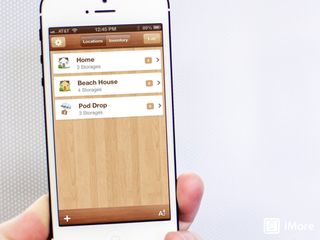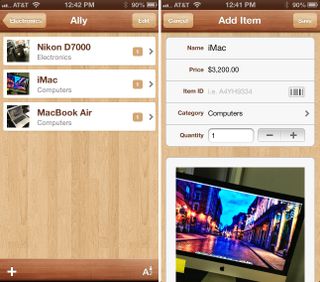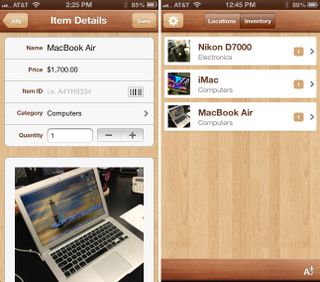Inventory List for iPhone review: Manage your stuff simply and easily

Some of us have a tendency to accumulate a lot more possessions than others. Whether you own a business, have multiple properties, or just have lots of things to keep track of, Inventory List can help. Unlike profesional inventory apps, Inventory List lets you add things and track them in your own way through the use of storage banks and locations.
There are lots of subscription inventory options out there but not all of us need that many features. Inventory List makes a pretty happy medium without being too over the top. The first thing you'll be asked to do is start adding locations and storage banks. Inventory List works as a nested hierarchy in order to keep track of your items with the top most level being a physical geographical location. For many of us this will be home, office, summer home, beach house, or any other location you need to inventory.

After you've created actual places, you can move on to creating locations within that space. For homes, this may be kitchen, bedroom, bathroom while at work it could be storage room, waiting room, or any other space you have a need to inventory items for. You'll also be given one more location spot that is nested so you can drill down to items such as cabinets, storage bins, or something else. I personally found this space better suited for categories instead of locations where I like to break things up into electronics, furniture, or any other category of item I'd like to inventory.
To add an item to Inventory List, you'll have to be drilled down all the way inside a physical location, space, and secondary space. This is one feature I wasn't too crazy about. Some people won't have a need for the secondary space and since categories are already supported when creating items, it seems redundant. A nice option would be for the user to be able to choose whether or not they even need that second location classification within settings and have the ability to disable it.
Once you're drilled down into a list, you can start adding individual items or quantities of a specific item. You can include a name, price, SKU (only if you want), a photo, and additional notes. This item will then be shown inside that list. You can also toggle between locations and individual inventory items on the home menu of Inventory List.

When it comes to syncing your items, Inventory List supports Dropbox sync and CSV export which should help keep active backups of all your items in case you ever needed to restore them or share them with others.
The good
- Easy to see icons with quite a few choices which can help visually identify lists and items faster
- Much simpler and easier to manage than advanced inventory programs
- The drill down of categories helps to keep organization on point
The bad
- Secondary location classification isn't always needed and should have a way to be turned off
- Dropbox sync was finicky and kept yelling about development mode until it finally went through on the 5th or 6th try
The bottom line
Inventory List is really made for people that have a large amount of items to track such as contractors or property managers. If you're in one of these professions, Inventory List is a must have. It's also great for self employed individuals or those who many have storage units they'd like to keep a better handle on.
Master your iPhone in minutes
iMore offers spot-on advice and guidance from our team of experts, with decades of Apple device experience to lean on. Learn more with iMore!
iPhone owners who aren't self employed or work with a moving inventory won't find much need for it, but those that haven't yet found a solution they're happy with should definitely give Inventory List a hard look.
- $4.99 - Download Now
iMore senior editor from 2011 to 2015.
Most Popular






